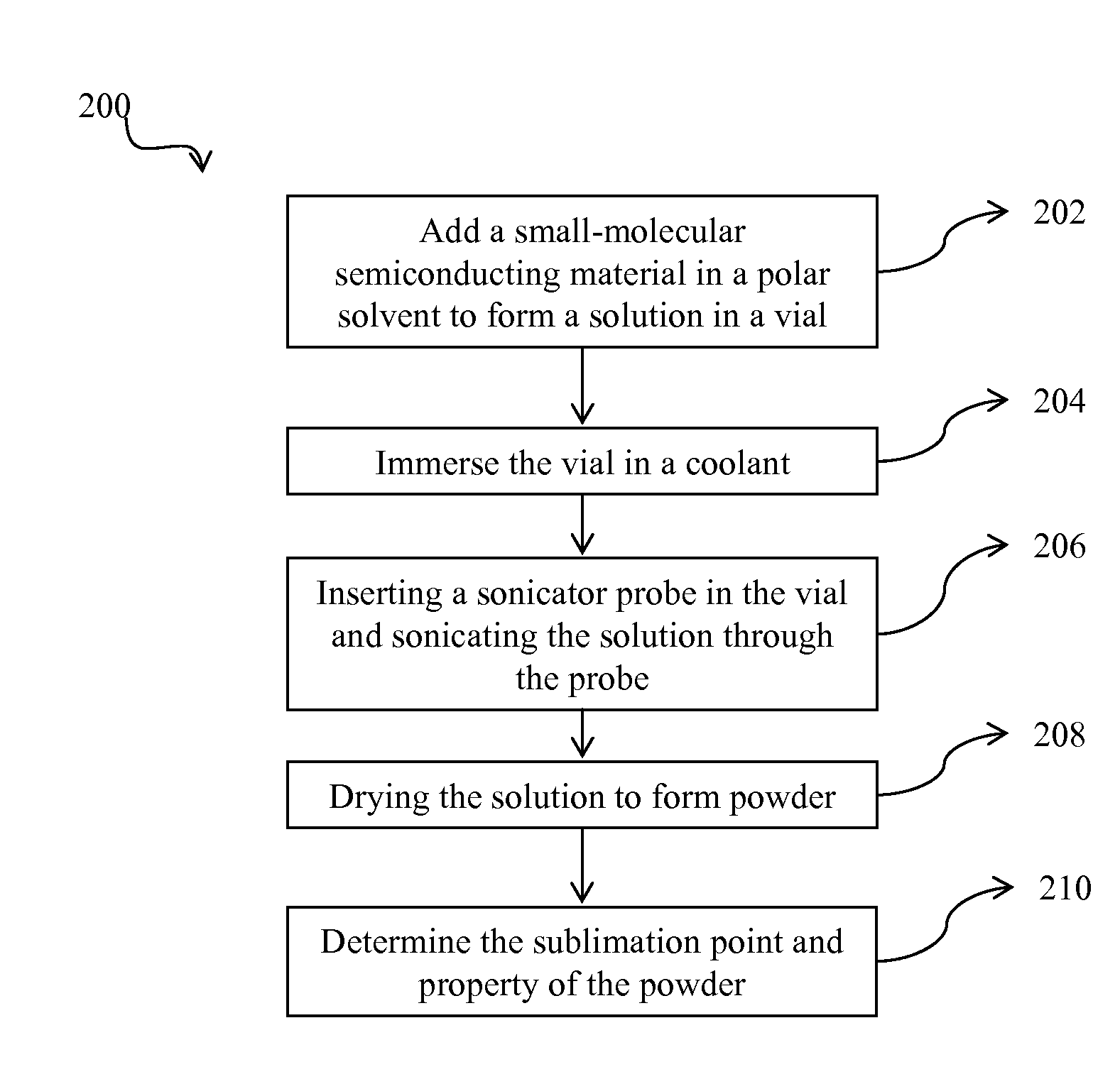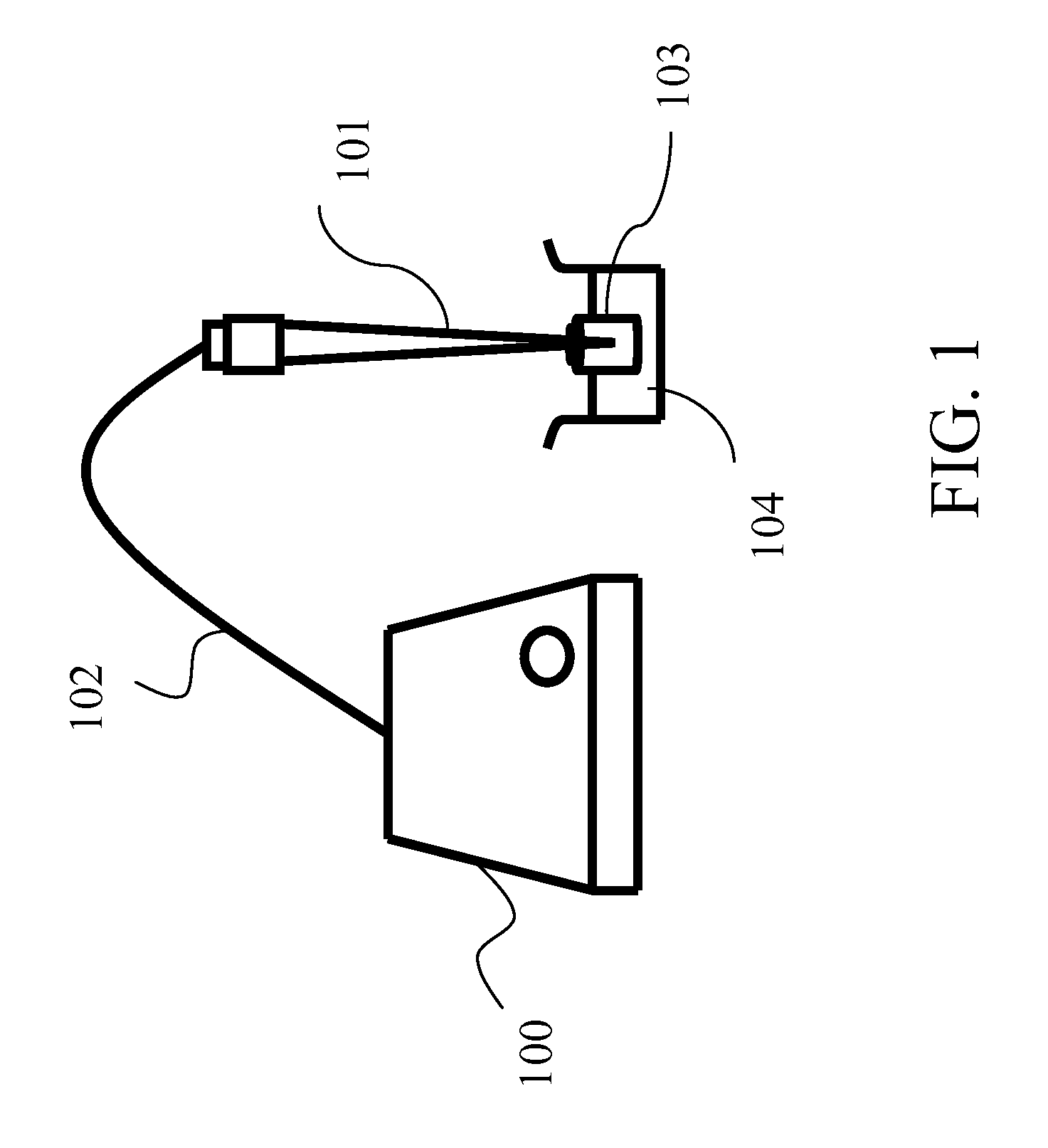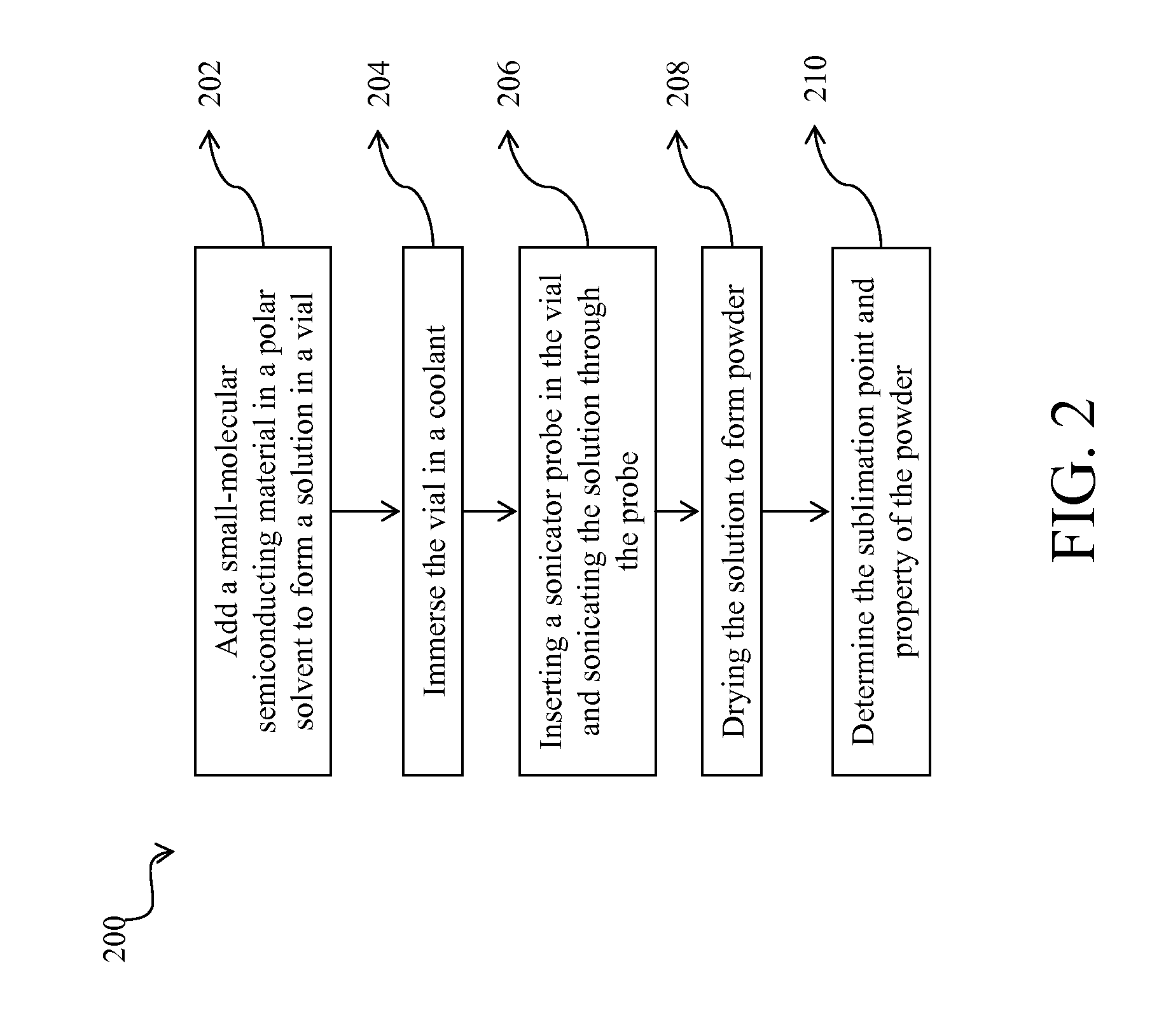Method for Lowering the Sublimation Point of a Small-Molecular Organic Semiconducting Material
a technology of organic semiconducting materials and sublimation points, which is applied in the direction of organic chemistry, energy-based chemical/physical/physical-chemical processes, chemical/physical/physical-chemical processes, etc., can solve the problems of increasing the cost of products, increasing the risk of damaging the environment, and easy damage to devices
- Summary
- Abstract
- Description
- Claims
- Application Information
AI Technical Summary
Benefits of technology
Problems solved by technology
Method used
Image
Examples
example 1
Lowereing the Sublimation Point of Pentacene
[0033]Two solvents were used to respectively dissolve pentacene and formed respective suspension solutions. Pentacene (20 mg) was dissolved in either pure water or dichlorobenzene (about 4 ml each) in a 10 ml vial and formed a suspension solution. Then, the vial was immersed in a coolant which contained ethylene glycol and the temperature was controlled at about −13° C. A sonicating probe was placed inside the vial and the suspension solution was sonicated for about 10 minutes at an operational voltage of 1500 V and a frequency about 20 kHz. Then, the suspension solution was dried at 40° C. on an evaporation pan in vacuum for 12 hours. Then, the powder was collected and proceeded with measurements including hot stage optical microscopy (HSOM), Fourier transform infrared absorption spectrum (FT-IR) and X-ray diffraction spectrum (PXRD).
[0034]Three comparative pentacene samples were also prepared, these samples were processed by at least one...
example 2
Lowering the Sublimation Point of Alq3
[0039]Two solvents were used to respectively dissolve Alq3 and form respective suspension solutions. Alq3 (20 mg) was dissolved in either pure water or xylene (about 4 ml each) in a 10 ml vial and formed a suspension solution. Then, the vial was immersed in a coolant which contained ethylene glycol and the temperature were controlled at about −13° C. A sonicating probe was placed inside the vial and the suspension solution was sonicated for about 10 minutes at an operational voltage of 1500 V and a frequency about 20 kHz. Then, the suspension solution was dried at 40° C. on an evaporation pan in vacuum for 12 hours. Then, the powder was collected and analyzed by thermo gravimetric analysis (TGA), FT-IR, and PXRD.
[0040]Three comparative Alq3 examples were also prepared, these samples were processed by at least one treatment(s) listed in Table 2, which includes, but is not limited to, (1) grinding, so as to further decrease the grain diameter of ...
PUM
 Login to View More
Login to View More Abstract
Description
Claims
Application Information
 Login to View More
Login to View More - R&D
- Intellectual Property
- Life Sciences
- Materials
- Tech Scout
- Unparalleled Data Quality
- Higher Quality Content
- 60% Fewer Hallucinations
Browse by: Latest US Patents, China's latest patents, Technical Efficacy Thesaurus, Application Domain, Technology Topic, Popular Technical Reports.
© 2025 PatSnap. All rights reserved.Legal|Privacy policy|Modern Slavery Act Transparency Statement|Sitemap|About US| Contact US: help@patsnap.com



